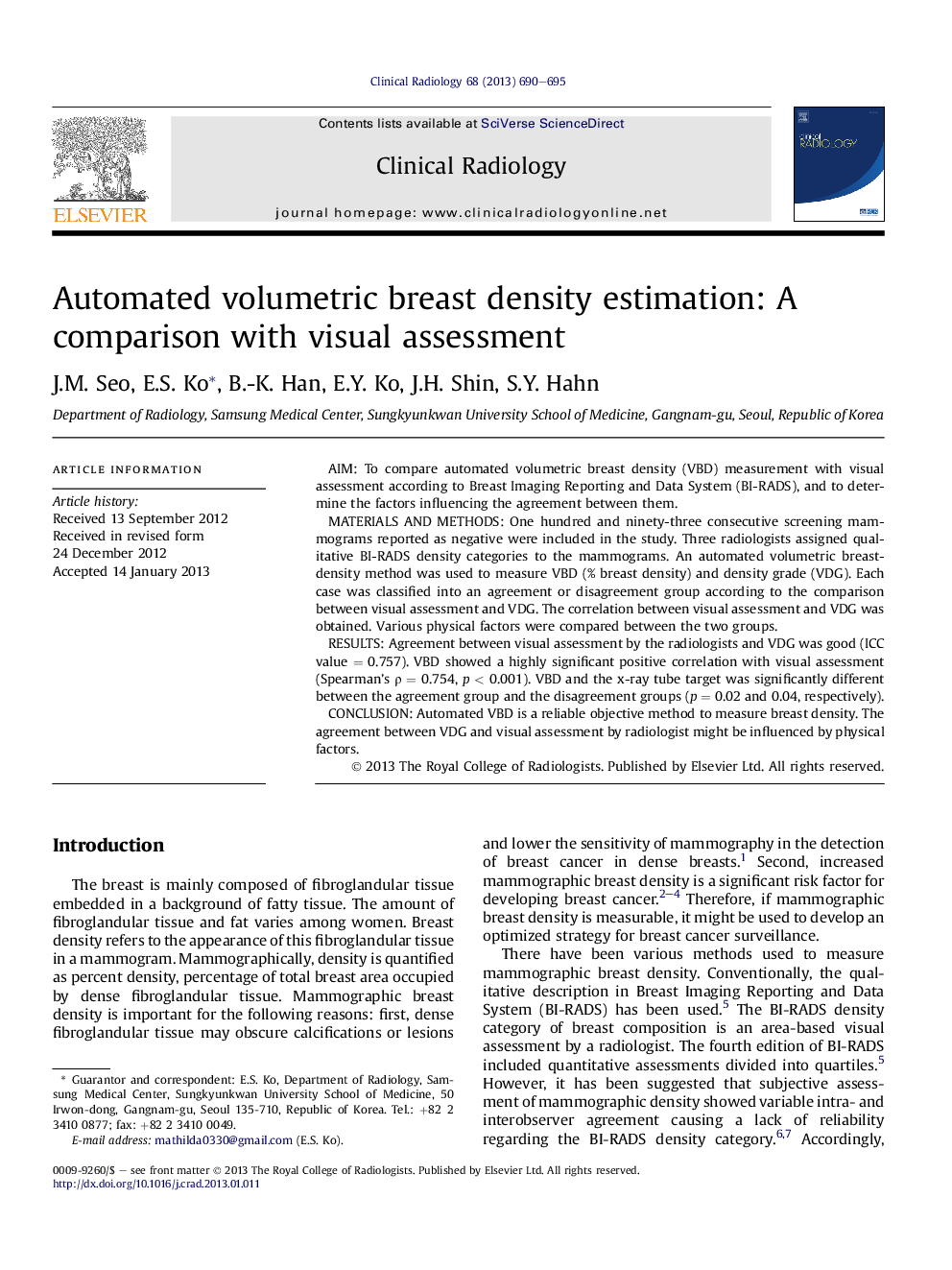| Article ID | Journal | Published Year | Pages | File Type |
|---|---|---|---|---|
| 3982481 | Clinical Radiology | 2013 | 6 Pages |
AimTo compare automated volumetric breast density (VBD) measurement with visual assessment according to Breast Imaging Reporting and Data System (BI-RADS), and to determine the factors influencing the agreement between them.Materials and methodsOne hundred and ninety-three consecutive screening mammograms reported as negative were included in the study. Three radiologists assigned qualitative BI-RADS density categories to the mammograms. An automated volumetric breast-density method was used to measure VBD (% breast density) and density grade (VDG). Each case was classified into an agreement or disagreement group according to the comparison between visual assessment and VDG. The correlation between visual assessment and VDG was obtained. Various physical factors were compared between the two groups.ResultsAgreement between visual assessment by the radiologists and VDG was good (ICC value = 0.757). VBD showed a highly significant positive correlation with visual assessment (Spearman's ρ = 0.754, p < 0.001). VBD and the x-ray tube target was significantly different between the agreement group and the disagreement groups (p = 0.02 and 0.04, respectively).ConclusionAutomated VBD is a reliable objective method to measure breast density. The agreement between VDG and visual assessment by radiologist might be influenced by physical factors.
